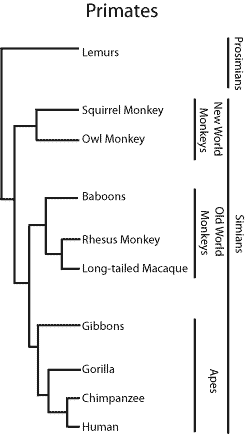

Languages:

Similar term(s): Non-human primates (NHPs).
Biological order that comprises prosimans, monkeys, apes, among which humans. Compared to other mammals, they have large brains, as well as an increased reliance on vision that allows depth perception. Most primates live in tropical or subtropical regions of the Americas, Africa and Asia.
The Primates order has traditionally been divided into prosimians and simians.
Source: GreenFacts

Source: GreenFacts
Deutsch: Primaten
Español: Primates
Français: Primates